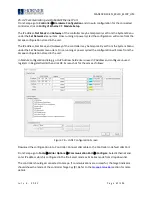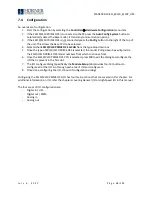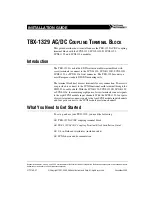
MAN1029-10-EN_EXL10_XL10P_UM
J u l y 6 , 2 0 2 2
P a g e 81 | 195
Protection for Inductive Loads
Inductive loads can cause reverse currents when they shut off that can shorten the life of relay contacts.
Some protective measures need to be determined by an engineer. If you have questions on protection from
inductive load, consult an application engineer or Horner Automation Technical Support. Details on devices
that may protect outputs can be found in the Spark Quencher Datasheet, MAN0962.
Output State on Controller Stop
When the controller is stopped the operation of each output is configurable. The outputs can hold the
state they were in before the controller stopped or they can go to a predetermined state. By default relay
outputs turn off. For more information on stop state see the
8.6
Digital Inputs
NOTE:
Refer to the datasheet for EXL10/XL10 PRIME OCS model being used for details on jumper settings.
NOTE:
The digital inputs on the EXL10/XL10 PRIME OCS are designed for low voltage DC inputs.
The
inputs are designed to support both positive and negative input modes. The mode is set by a jumper
setting and a configuration parameter in Cscape. All the inputs on the unit must be configured to the same
mode.
Figure 8.6
–
Positive and Negative Inputs
In positive logic mode a positive voltage applied to the input will turn the input. The internal design of this
mode is basically a resistor from the input to I/O ground. This mode is sometimes called sourcing.
In negative logic mode, connecting the input to the I/O ground or zero volts will turn the input on. The
internal design of this mode is basically a resistor from the input to the positive I/O voltage (usually 12V
or 24V). This mode is sometimes called sinking.
Some of the digital inputs may support high-speed input functional such as counting or frequency
measurement.
I1
0V
001XLE036
12-24VDC
I1
0V
Positive Logic In Negative Logic In
Positive Logic vs. Negative Logic Wiring
The XL SERIES OCS can be wired for Positive Logic inputs or
Negative Logic inputs.
















































